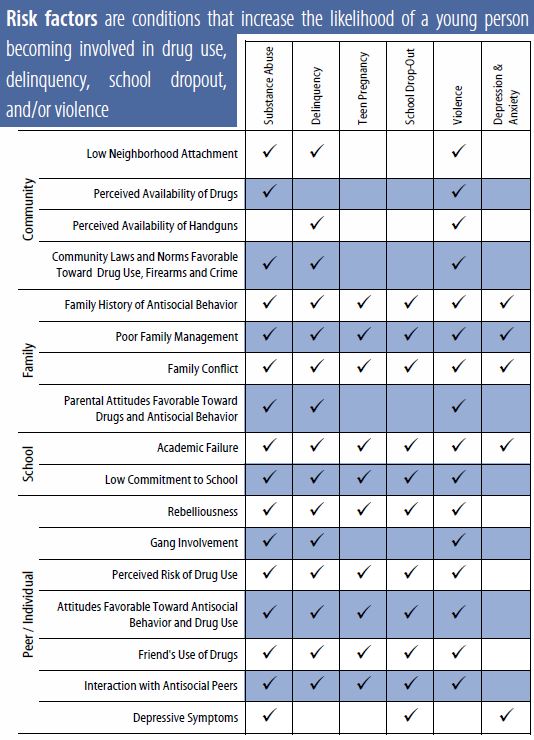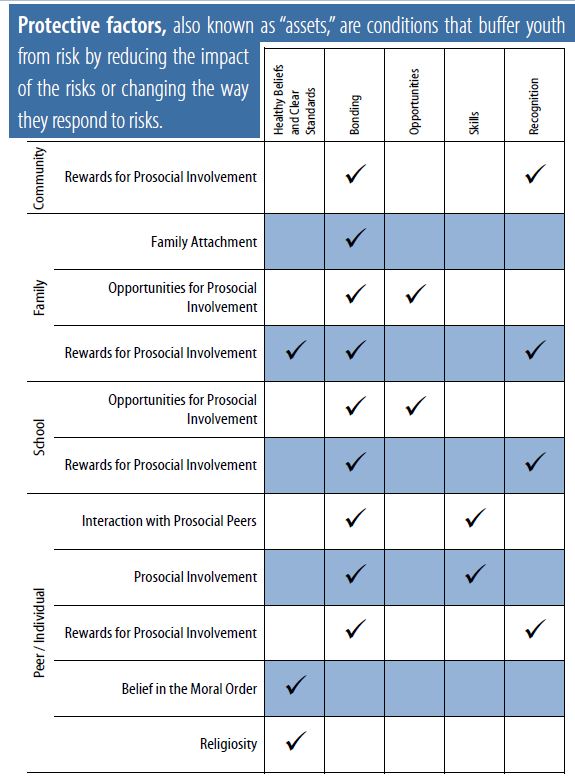Substance abuse prevention is about so much more than simply telling kids not to use alcohol or other drugs. Effective prevention starts with identifying what children and youth in the community need, and then meeting that need with research-backed strategies.
Risk & Protective Factors: The Foundation for Effective Prevention
Risk factors are those things that increase the chance a child will become vulnerable to making risky or unhealthy decisions. Risk factors include:

In contrast, protective factors help lower the likelihood a child will be at risk, such as:

To prevent substance abuse and other risky behaviors, preventionists look at both sides of the equation, risk and protective factors, and weigh them against each other. Ideally, we’ll be able to lower risk factors; however, when that’s not possible, we leverage research-backed strategies to increase protective factors that help cancel out risk.
The Preventionist’s Tool
At Compass Mark, we look specifically at the populations we serve in Lancaster and Lebanon Counties to design substance abuse prevention programs that address risk factors and/or boost protective factors. Our team uses the Pennsylvania Youth Survey (PAYS) as the foundation for our process. This statewide survey, which is distributed by the PA Commission on Crime and Delinquency every two years, assesses youth in grades 6, 8, 10, and 12 regarding their behavior and attitudes about alcohol, other drugs, violence, and more.
The survey then calculates the percentage of youth at risk because of factors like parental attitudes toward drug abuse, depressive symptoms, handgun availability, and low neighborhood attachment. Likewise, it calculates the percentage of youth with protective factors such as belief in moral order, opportunities for prosocial involvement, and more.
2019 survey full reports:
- Lancaster County NEW
- Lebanon County NEW
- Chester County NEW
To chat with us about finding an addiction prevention program for your school, youth group, or organization, contact our team at 717-299-2831. Risk & protective factor images sourced from the Pennsylvania Youth Survey 2019